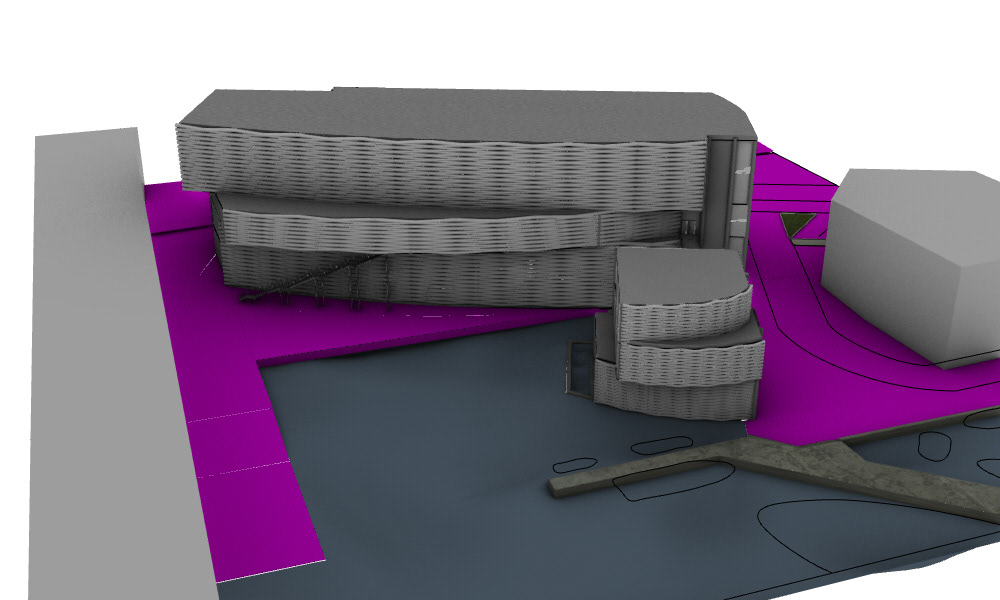PROBLEM:
The maritime industry is quickly aging and there are very few of the next generation going into the industry. As such, the Seattle Maritime Academy is looking to improve their facility through advanced technology in order to increase interest in the field and inspire the next generation.
THESIS:
Through the use of sustainable design strategies, the Seattle Maritime Academy can inspire the next generation and save on the cost of powering a high energy generating facility.
STRATEGY:
The most exiting new labs in the facility include the wooden boat building lab, the electronics labs, the deck labs, and the damage control wet lab. These labs, while using a lot of energy, offer an exciting view on the industry that could inspire the next generation. The damage control wet lab is placed on display in the bay to attract those passing on the bridge. Through the use of a water wall facade, energy is saved to power the labs and further attract passerby's with it's unique translucent qualities.
The below graphics show the circulation and organization of the building, and how it was designed for user experience: (orange=faculty space, green=public space, blue=large lab space, pink=classroom space)


Level 1 Floor Plan

Level 2 Floor Plan

Level 3 Floor Plan

Level 4 Floor Plan

Level 5 Floor Plan
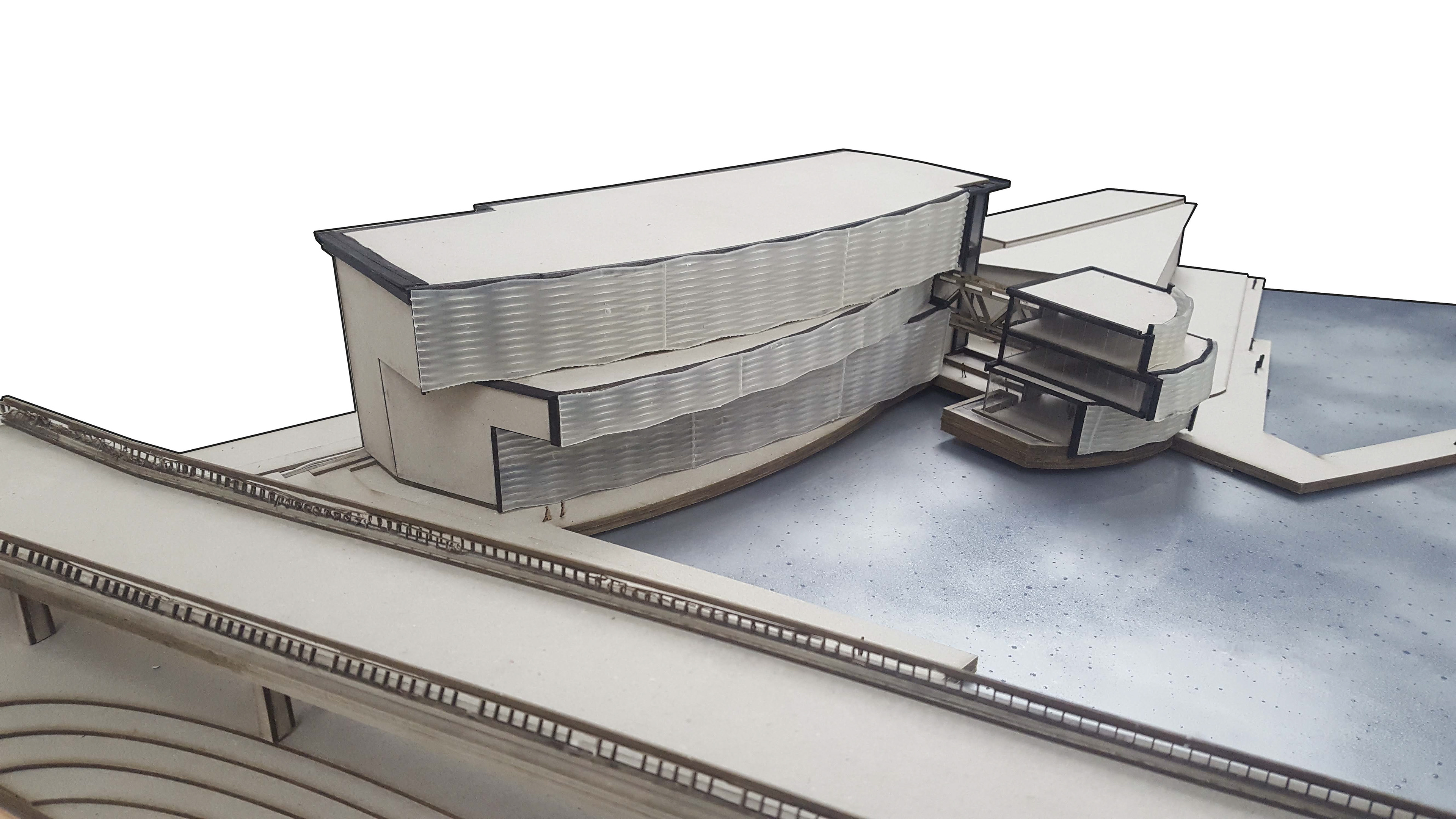
View of the building from the Ballard Bridge

View of the building from passing ships

Building Facade was created using Grasshopper, Rhino, and 3D printed

Site Model/Building were created through the use of Laser Cutting and assembly
THE PROCESS
In Rhino, volumes were created based on their spacial requirements for each area of the program (and color coded). These volumes were moved around the site (in Rhino) in order to experiment with different organizational patterns.
A few iterations...


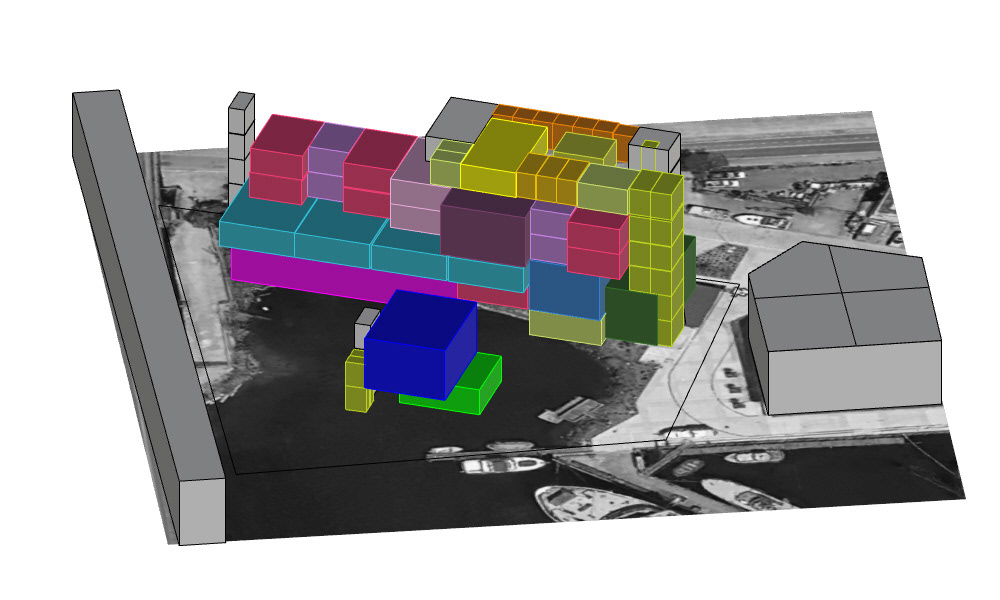




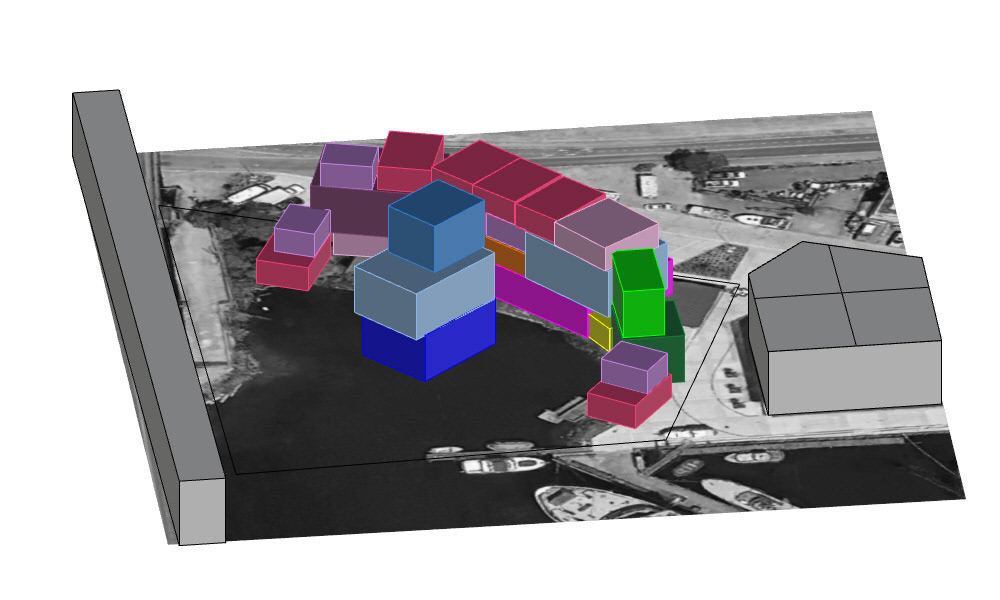




The tallest iteration was 7 levels:
Creating a shell from the volumes:
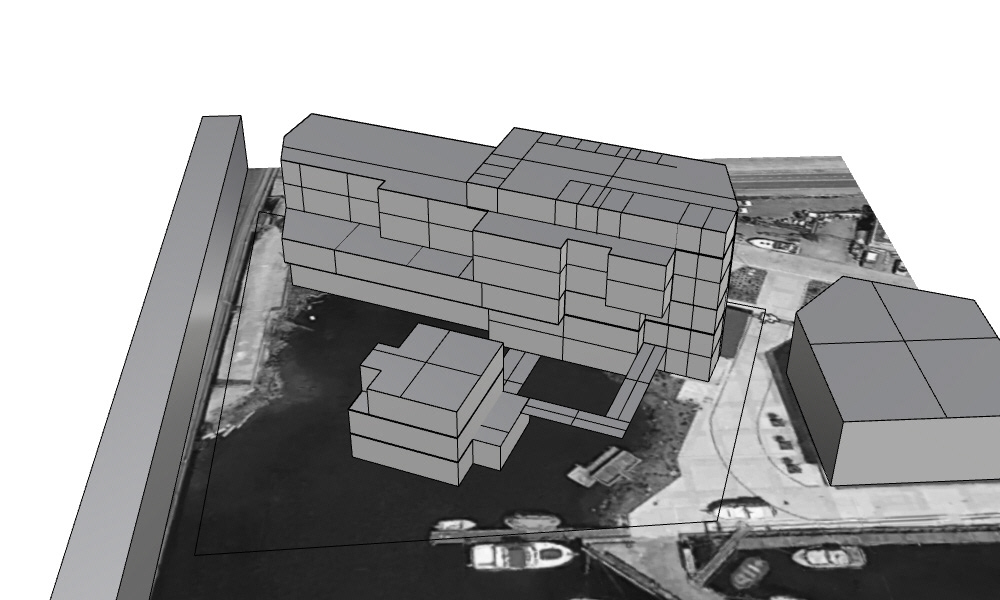
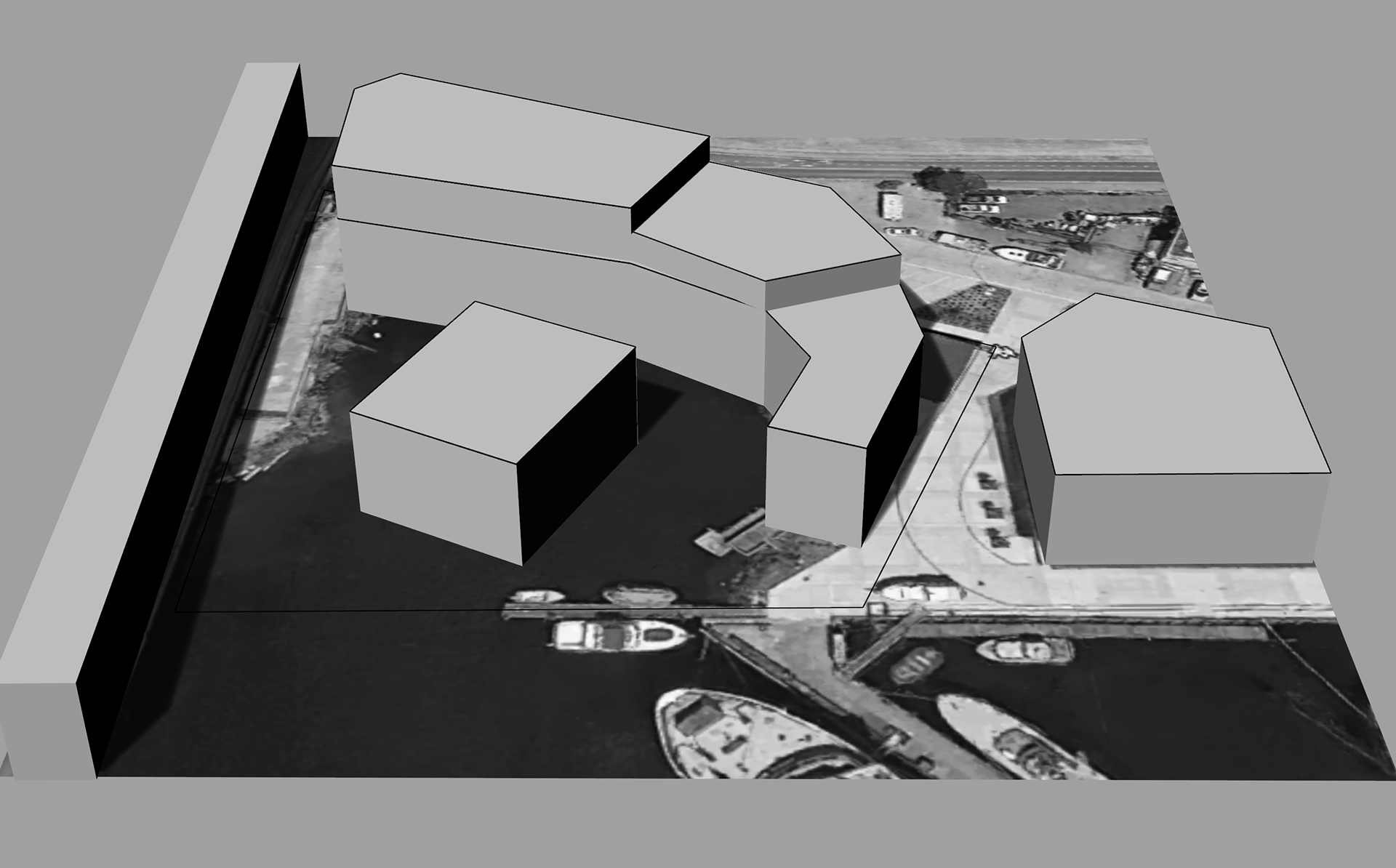
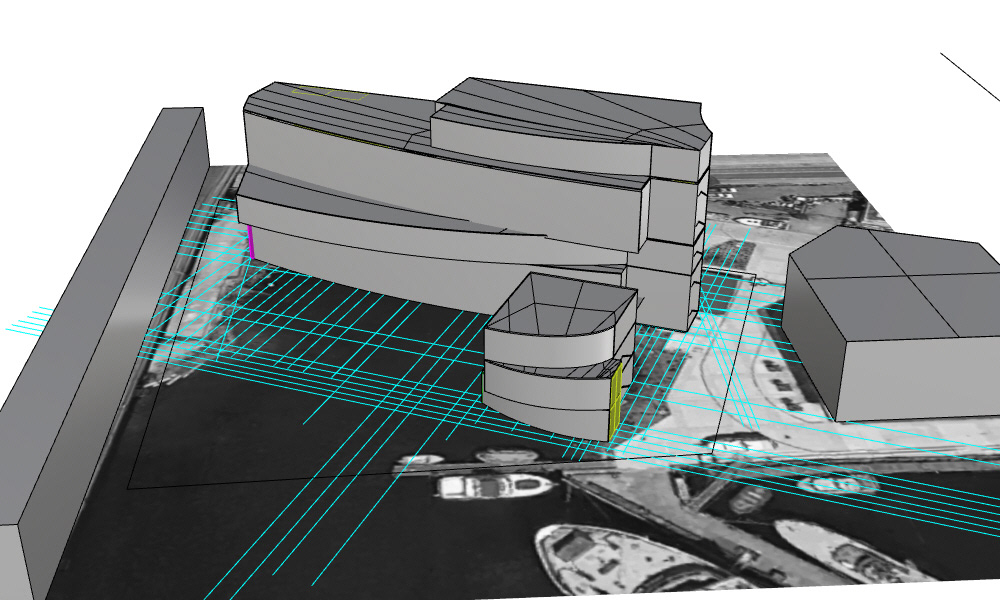
Final resolution:

